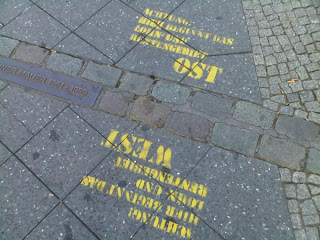I wrote this post for The Common Voice
blog. Twitterfriend @DougDowen asked me to write for his blog as a stand-in while he
was observing Yom Kippur, a Jewish holiday.
I’ve often thought about how much more difficult setting up a new life in London would have been without social media.
I’ve often thought about how much more difficult setting up a new life in London would have been without social media.
Through Twitter, since
moving to London from Toronto in 2008, I’ve been able to make new friends in
England and keep in touch with old friends in Canada.
When I was a child, my
mother -- who is English and emigrated to Canada with my Canadian father in the
1960s -- relied on snail-mail letters from family and friends to stay in touch.
I’m lucky because I
have a Canadian and a British passport, which means I can travel freely to
Canada, Britain, the United States and the 27 countries of the European Union
without needing a visa.
Last weekend I went to
Berlin, where invisible and visible borders destroyed so many lives in the 20th
century.
Nazi rule in Germany
after 1933 destroyed Berlin’s roughly 200,000-strong Jewish community by
enforcing exile to the Sachsenhausen concentration camp or to death camps.
After the Second World
War, Berlin was divided first into four sectors among Russia, France, Britain
and the U.S. and later, in 1961, split into communist East Berlin and
capitalist West Berlin.
The Berlin Wall,
constructed to prevent an exodus from east to west during the Cold War,
separated families and friends again until it was smashed in 1989.
Now the city
commemorates the Holocaust with the dramatic Memorial to the Murdered Jews of
Europe, designed by Patrick Eisenman, and engineer Buro Happold, made up of
concrete slabs, and via tributes in the decade-old Jewish Museum, designed
partly by architect Daniel Libeskind.
The divisive wall is
also commemorated throughout the city with markings on the ground, pieces of
wall and a museum at Checkpoint Charlie, which marks the border crossing between the old East
and West Berlin.
Estimates vary, but
between 100 and 200 people were killed trying to escape from east to west.
To a tourist, reconstruction, reconciliation and remembrance characterise modern-day Berlin.
Old scars remain.











No comments:
Post a Comment